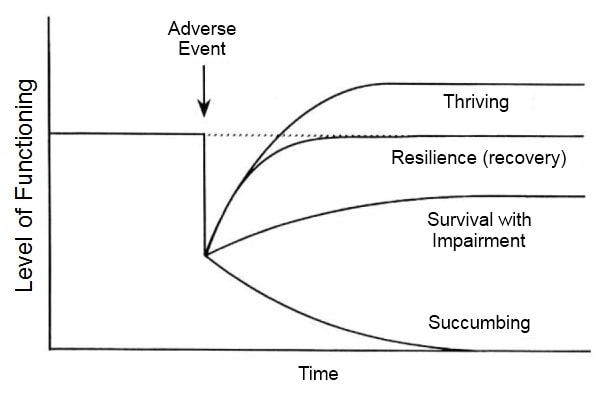|
The mystical experience has been a topic of profound interest and exploration throughout history. William James, a trailblazer in the examination of such experiences, eloquently described the journey as an "organic ripening." While various scholars have presented nuanced stages of the mystical journey, they converge on key elements that mirror the stages of a psychological crisis. These stages invariably encompass: - Encountering unforeseen stressful life events, - A transient decline in one's usual functioning, - The potential for significant personal and spiritual evolution. In my work, "Mystical Experience: A Psychological Perspective," I delineated a five-phase crisis model, capturing the essence of this transformative journey: 1. Pre-crisis 2. Impact 3. Crisis 4. Resolution 5. Post-crisis In this piece, I shall delve deeper into these quintessential phases. It's pivotal to understand, though, that no singular model can wholly encapsulate the fluidity and diversity of mystical experiences. The journey may sometimes see phases rapidly transitioning, at times some phases might appear skipped, or occasionally one might find themselves anchored at a specific stage. Yet, the inherent strength of this crisis model is its capacity to formulate testable hypotheses, paving the way for rigorous empirical research. Phase 1: The Equilibrium Phase (Pre-Crisis) In this phase, individuals find themselves in a balanced state, where stressors are countered effectively by their coping mechanisms. Continuously tackling problems, individuals remain poised as long as they trust their abilities to manage challenges, ensuring stability. Phase 2: The Disruption Phase (Impact) This phase marks the onset of a psychological crisis, triggered by sudden interruptions to vital life goals, which elude standard problem-solving techniques. Such disruptions might arise from: - Strained personal relations - Job losses - Financial strains - Life-altering changes - Bereavements - Dire health diagnoses During the initial 1-3 days, individuals grapple with shock, confusion, and a profound sense of vulnerability amidst tumultuous emotions. It's vital to understand that the external events in themselves aren't the crisis; the individual's emotional and psychological reactions give the event its weight. Phase 3: The Turmoil Phase (Crisis) Following the initial shock, a turbulent period ensues, typically lasting 1-3 months. Marked by heightened anxiety, irritability, fatigue, despondency, and sleep disturbances, individuals confront the pressing challenge head-on. As conventional strategies falter, feelings of anxiety, desolation, and hopelessness surge. Gradually, individuals grapple with profound existential dilemmas, wrestling with a quest for elusive "truths" and gravitating towards non-linear guidance. Phase 4: The Intuitive Response Phase (Resolution) During this phase, all efforts pivot towards mitigating distress. However, decision-making leans heavily on instinctual reactions over analytical reasoning. Notably, not all resolutions prove beneficial. As William James pointed out, mystical experiences can traverse the spectrum from enlightening to darkly unsettling. A holistic understanding of mystical experiences should recognize the potential for both uplifting and detrimental consequences. Phase 5: The Rebuilding Phase (Post-Crisis) Stretching over a span of 2-12 months, this phase signifies a time of renewal, reconstruction, and recalibration. It witnesses profound, occasionally stark, transformations in the individual's being. An equilibrium, albeit altered, is achieved. It may either dip below, match, or exceed the pre-crisis level. The aftermath of a crisis can be visualized through four distinct trajectories: 1. Succumbing: Overwhelmed by the crisis, individuals might find their capacities diminished, ultimately feeling defeated. 2. Survival with Impairment: Here, individuals pull through, but with noticeable deficits or limitations. 3. Resilience: In this scenario, individuals bounce back, reclaiming their pre-crisis state. 4. Thriving: The most empowering outcome, individuals not only recover but ascend beyond their prior state, embodying traumatic growth. Figure 4. Four possible outcomes of adversity Mystical experiences frequently usher in profound and enduring positive transformations. These transformative effects can be categorized into four domains: self-awareness, interpersonal relationships, life perspective, and understanding of the mystical experience itself.
1. Self-awareness: While a mystical experience doesn't necessarily alter the foundational personality traits, it powerfully reshapes one's aspirations, emotions, attitudes, behaviors, and overall life purpose. This is akin to a personal metamorphosis, redefining one's essence and direction. 2. Interpersonal Relationships: Post such an experience, individuals tend to exhibit greater openness, authenticity, and tolerance, enhancing their connections with others. Their interactions become more genuine and empathetic. 3. Life Perspective: One of the most profound shifts is in the perception of life itself. Mystical experiences frequently instill a renewed sense of hope, making purpose and meaning more palpable in day-to-day existence. Life is seen through a lens of deeper significance and interconnectedness. 4. Understanding Mystical Experiences: Finally, individuals develop a more profound comprehension of the integral role mystical experiences play in life's grand tapestry. They come to value these moments not as anomalies but as crucial chapters in their life story. So, should you ever find yourself in the throes of a stressful event, questioning the essence of existence, remember: it might just be the prelude to an illuminating transformation. A journey that might elevate your understanding of life to dimensions beyond your wildest imaginations.
0 Comments
|


 RSS Feed
RSS Feed